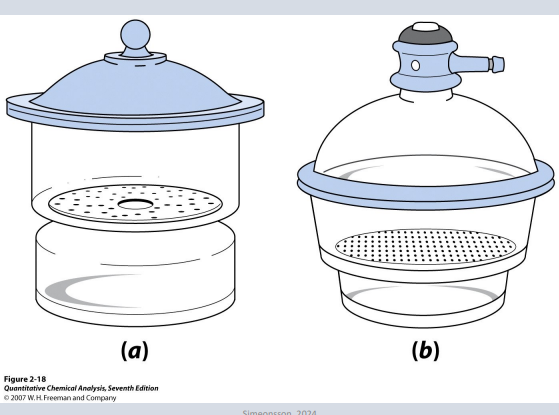Exam One Review
1/11
Earn XP
Description and Tags
Chapters 0-5
Name | Mastery | Learn | Test | Matching | Spaced |
|---|
No study sessions yet.
12 Terms
Dessicator
A lab instrument that contains a drying agent that absorbs water and maintains a low humidity environment for storing dried samples between mass readings.

Volumetric flask
Calibrated to contain a fixed volume at a given temperature.
Indicators
Substances used to identify when a titration is complete or nearly complete.
jkljlk
kljkl
Systematic errors
Also called determinate errors, these are errors that have a definite source or cause. In theory, the cause of the error can be identified and corrected. They are consistently in the same mathematical direction.
Random errors
Also called indeterminate errors, these are errors that are fundamental in nature and cannot be eliminated. Errors in either direction are equally probable and can be treated using statistics.
Accuracy
Absolute and relative errors can be used to indicate ( ), the closeness of measurements to a “true” value.
Precision
Standard deviation, variance, and range are indicators of ( ), the closeness of repeated measurements to each other.
Highest
The number of significant figures in a math operation involving addition or subtraction of two numbers is determined by the number having its last digit in the ( ) decimal place.
Ex) 12.341 + 23.45 = 35.79 because the second value is only known to the hundredths place.
Fewest
The number of significant figures in a math operation involving multiplication or division of two numbers is determined by the number having the ( ) number of digits.
Ex) 12.3412 × 23.45 = 289.4 since the second value is only known to four digits
One
Standard deviations should only be reported to ( ) digit.
Last
The first uncertain digit is the ( ) significant figure in the final result.